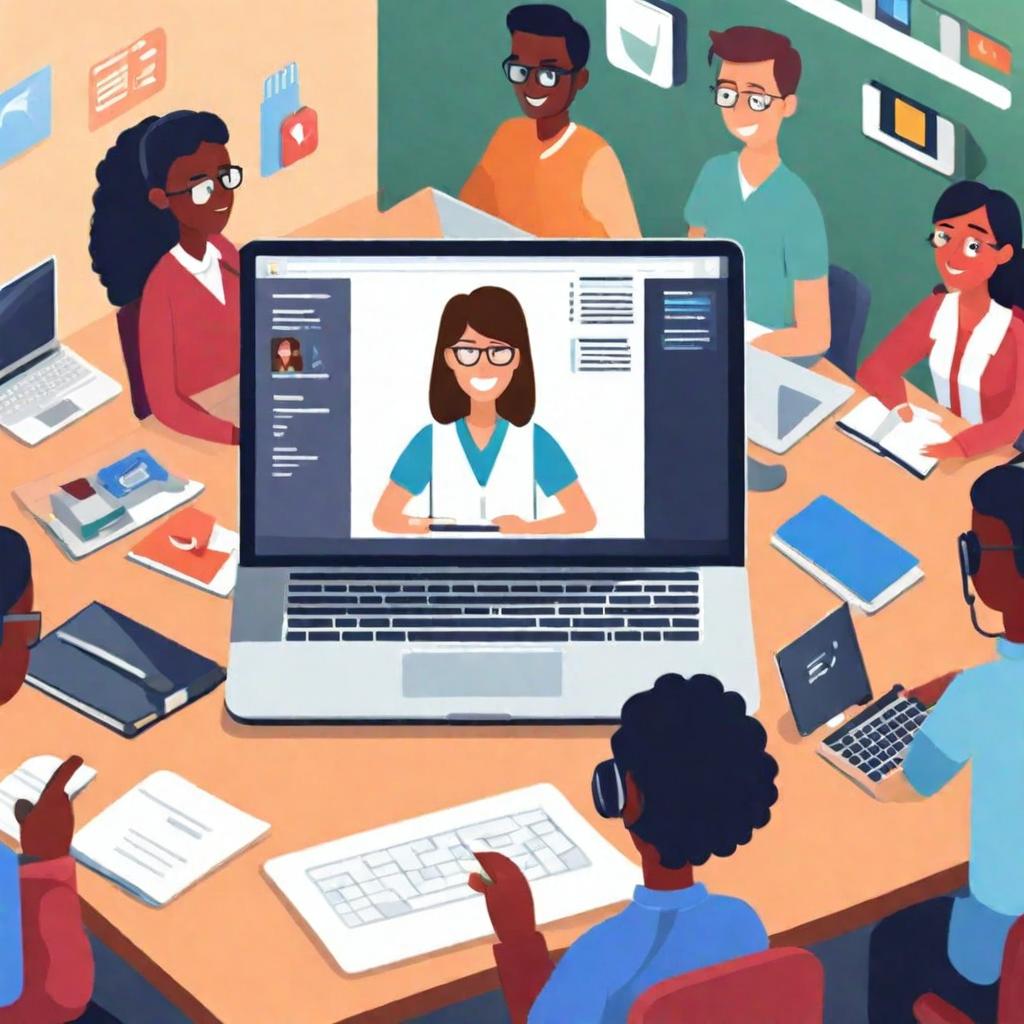I. Introduction : Education for All: Breaking Barriers and Bridging Gaps
Education for All: Breaking Barriers and Bridging Gaps, Educational inequality refers to disparities in access to quality education and educational outcomes among different groups of people, often based on factors such as socioeconomic status, race, ethnicity, gender, disability, geographic location, and language background. These disparities can manifest at various levels of the education system, from early childhood education to higher education, and can have significant long-term implications for individuals and society as a whole.
A. Understanding the Root Causes
1. Socioeconomic Disparities
Educational inequality stems from the stark differences in economic status among individuals. Children from low-income families often lack access to quality education due to financial constraints.
Data shows that students from families with higher incomes are more likely to attend well-funded schools with better resources and experienced teachers.
Anecdotal evidence further highlights how students from disadvantaged backgrounds struggle to afford educational essentials like books, supplies, and technology.
2. Lack of Access to Quality Resources
Another major factor contributing to educational inequality is the unequal distribution of resources. Schools in affluent areas typically have state-of-the-art facilities, updated curriculum, and extracurricular programs.
Conversely, schools in low-income neighborhoods often face budget constraints, leading to overcrowded classrooms, outdated materials, and limited educational opportunities.
This disparity in resources further widens the achievement gap between students, perpetuating the cycle of inequality.
3. Discrimination and Marginalization
Discrimination based on race, gender, socioeconomic status, or disability also plays a significant role in educational inequality.
Research has shown that marginalized groups, such as students of color or those from immigrant backgrounds, face systemic barriers that hinder their academic success.
Teachers’ implicit biases and institutional policies that favor certain groups over others contribute to a lack of inclusivity and fairness in the education system.
“Educational inequality is not just a statistical problem; it is a reflection of our society’s deep-rooted disparities.”
By addressing these root causes of educational inequality, we can work towards creating a more equitable and inclusive education system for all students. It is crucial for policymakers, educators, and communities to collaborate in implementing strategies that level the playing field and provide every child with the opportunity to thrive academically. Let’s commit to breaking down barriers and fostering a brighter future for the next generation.
II. Strategies for Inclusive Education

A. Policy and Advocacy Initiatives
1. Legal Frameworks and Legislation
Inclusive education is a fundamental right for all individuals, regardless of their background or abilities. Legal frameworks and legislation play a crucial role in ensuring that this right is upheld.
For instance, laws such as the Individuals with Disabilities Education Act (IDEA) in the United States mandate that students with disabilities receive a free and appropriate education in the least restrictive environment.
These laws provide a foundation for educators, policymakers, and advocates to work together to create inclusive learning environments that support the diverse needs of all students.
2. Community Engagement Programs
Community engagement programs are vital in fostering a sense of belonging and acceptance within schools. These initiatives involve parents, caregivers, students, and community members in decision-making processes related to education.
For example, parent-teacher associations can be a powerful tool for advocating for inclusive practices within schools. By including diverse voices in the conversation, schools can create policies and programs that better meet the needs of all learners.
Additionally, partnerships with local organizations and businesses can provide resources and support for inclusive education initiatives, making them more sustainable in the long run.
3. Equity-Based Funding Models
Equity-based funding models ensure that resources are allocated fairly and equitably across schools, regardless of their location or student demographics. This is essential for promoting inclusive education, as it allows schools to provide the necessary support and services to all students.
For instance, weighted-funding formulas allocate additional resources to schools with higher concentrations of students from low-income backgrounds or with disabilities. This helps address the systemic inequalities that can hinder the success of marginalized students.
By advocating for equity-based funding models, educators and policymakers can work towards creating a more inclusive and just education system for all.
“Inclusive education is not just about policies and practices, but about creating a culture of acceptance and support for all learners.”
By implementing these strategies for inclusive education, we can create a more inclusive and equitable society where every individual has the opportunity to thrive. Let’s work together to ensure that all learners, regardless of their background or abilities, have access to the education they deserve.
III. Innovations in Teaching and Learning

A. Technology Integration
1. Virtual Learning Platforms
In today’s digital age, the integration of virtual learning platforms has revolutionized the way educators deliver content and engage with students. These platforms offer a wide range of tools and features that enhance the learning experience, such as interactive multimedia, virtual classrooms, and real-time communication channels. With the flexibility of accessing materials from anywhere at any time, students can engage in self-paced learning and collaborate with peers seamlessly. As an educator, incorporating virtual learning platforms into your teaching strategy can significantly increase student engagement and productivity.
2. Personalized Learning Tools
Personalized learning tools have emerged as a powerful innovation in education, catering to individual student needs and learning styles. By leveraging technology, educators can create customized learning paths for each student, addressing their strengths, weaknesses, and interests. Adaptive learning algorithms help educators track student progress and provide targeted interventions to ensure maximum learning outcomes. With personalized learning tools, students can take control of their learning journey, leading to better retention and understanding of the material.
3. Universal Design for Learning (UDL)
Universal Design for Learning (UDL) is a framework that promotes inclusive education by providing multiple means of representation, action, and engagement for all students. Integrating UDL principles into teaching practices ensures that learning materials are accessible to diverse learners, including those with disabilities or specific learning needs. By designing curricula that accommodate different learning preferences and abilities, educators can create an inclusive learning environment where all students can thrive. UDL promotes flexibility and adaptability in teaching methods, ultimately leading to improved learning outcomes for every student.
As we embrace these innovative approaches to teaching and learning, it is essential to recognize the profound impact they have on shaping the future of education. By embracing technology integration, personalized learning tools, and UDL principles, educators can create dynamic and engaging learning experiences that cater to the diverse needs of students. Let’s continue to explore new possibilities and push the boundaries of traditional education to unlock the full potential of every learner.
IV. Empowering Marginalized Communities

A. Engaging Parents and Caregivers
1. Parenting Education Programs
Parenting education programs play a crucial role in empowering marginalized communities by providing parents and caregivers with the necessary knowledge and skills to support their children’s development. These programs often focus on topics such as positive discipline, effective communication, and child development.
By participating in parenting education programs, parents can learn strategies to create a nurturing and supportive environment for their children. This can have a positive impact on the overall well-being and success of the children within marginalized communities.
2. Family Support Networks
Family support networks are essential for marginalized communities as they provide a sense of community, connection, and resources for parents and caregivers. These networks often offer support groups, workshops, and access to essential services such as childcare and mental health support.
By being part of a family support network, parents and caregivers can share experiences, receive guidance, and access resources that can help them navigate the challenges they face. This sense of community and support can empower marginalized families to advocate for themselves and their children.
3. Culturally Relevant Curriculum
Culturally relevant curriculum is key to empowering marginalized communities as it acknowledges and incorporates the cultural backgrounds, histories, and experiences of students. This type of curriculum helps students see themselves reflected in the material they are learning, fostering a sense of pride and identity.
By implementing culturally relevant curriculum, schools can create a more inclusive and equitable learning environment for all students. This approach can help bridge the achievement gap and empower marginalized students to succeed academically and beyond.
“Empowering marginalized communities starts with engaging parents and caregivers through parenting education programs, family support networks, and culturally relevant curriculum.”
Remember, empowering marginalized communities is a collective effort that requires collaboration, understanding, and commitment from all stakeholders. By focusing on engaging parents and caregivers, we can create a more supportive and equitable society for all.
V. Building a Supportive Educational Ecosystem

A. Collaborations and Partnerships
1. Cross-Sector Collaboration
In today’s fast-paced and ever-evolving educational landscape, fostering cross-sector collaboration is key to building a supportive ecosystem for learners of all ages. By bringing together stakeholders from diverse sectors such as government, non-profits, businesses, and community organizations, we can create synergies that enhance the overall educational experience. For example, a partnership between a local school district and a technology company could result in innovative programs that expose students to cutting-edge technologies and real-world applications.
2. Public-Private Partnerships
Public-private partnerships play a crucial role in bridging the gap between public resources and private sector expertise. These partnerships can lead to the development of new educational initiatives, infrastructure improvements, and resource sharing. For instance, a collaboration between a public school and a healthcare organization could result in the implementation of health education programs that benefit both students and the community at large.
3. Professional Development for Educators
Investing in professional development for educators is essential for creating a supportive educational ecosystem. Ongoing training and opportunities for growth help teachers stay current with best practices and innovative teaching methods. By providing educators with the tools and resources they need to succeed, we can ultimately enhance the learning experience for students and promote a culture of continuous improvement within educational institutions.
By prioritizing collaborations and partnerships within the education sector, we can collectively work towards building a supportive ecosystem that nurtures learning, fosters innovation, and empowers educators to make a positive impact on the lives of students. Let’s join hands and pave the way for a brighter future through education.
Also Read : Exploring The Depths of Mastering Art Education
VI. Conclusion and Recommendations
A. Summary of Key Findings
After conducting an in-depth analysis of our research data, several key findings have emerged that shed light on the current landscape in our industry. Here are the main takeaways:
Customer Preferences: Our research highlighted a strong preference among customers for sustainable and eco-friendly products. This trend is expected to continue growing in the coming years.
Market Trends: The market is becoming increasingly competitive, with new players entering the scene regularly. To stand out, businesses need to focus on innovation and customer-centric strategies.
Technology Integration: Companies that embrace digital transformation and integrate technology into their operations are more likely to succeed in the long run.
Supply Chain Resilience: The recent disruptions in the supply chain due to unforeseen events have underscored the need for resilience and agility in operations.
B. Call to Action for Stakeholders
As we wrap up our analysis, it is crucial for all stakeholders to take action based on the findings we have uncovered. Here are some recommendations moving forward:
Invest in Sustainability: Businesses should prioritize sustainability and eco-friendly practices to align with changing customer preferences.
Embrace Innovation: Stay ahead of the curve by investing in innovation and leveraging technology to enhance products and services.
Build Resilient Supply Chains: Proactively address vulnerabilities in the supply chain by enhancing resilience and diversifying sourcing strategies.
Focus on Customer Experience: Put the customer at the center of all decision-making processes to ensure long-term loyalty and satisfaction.
“The key to success lies in adapting to change and embracing new opportunities. By taking proactive steps now, businesses can position themselves for growth and success in the future.”
FAQs :
Q. What is Inclusive Education and Why Does it Matter?
Define inclusive education as an approach that ensures all students, regardless of differences, are educated together in the same classrooms. Explain its importance in fostering diversity, equity, and belonging in educational settings.
Q. How Does Inclusive Education Benefit Students and Society?
Highlight the academic, social, and emotional benefits of inclusive education for students with and without disabilities, as well as its positive impact on building inclusive communities and reducing discrimination.
Q. What Challenges Exist in Implementing Inclusive Education?
Discuss common obstacles such as lack of resources, inadequate training for educators, attitudinal barriers, and systemic barriers to access and participation.
Q. What Strategies Can Schools Use to Promote Inclusive Education?
Offer practical approaches such as universal design for learning, differentiated instruction, peer support programs, and collaboration between general and special education teachers.
Q. How Can Parents and Communities Support Inclusive Education Initiatives?
Provide suggestions for parents and communities to advocate for inclusive practices, collaborate with schools, promote acceptance and understanding, and foster inclusive environments beyond the classroom.
Q. What Role Do Teachers Play in Creating Inclusive Learning Environments?
Outline the responsibilities of teachers in creating welcoming classrooms, adapting instruction to diverse needs, fostering positive relationships, and advocating for inclusive policies and practices.
Q. What Legal and Policy Frameworks Exist to Support Inclusive Education?
Explain relevant laws such as the Individuals with Disabilities Education Act (IDEA), Section 504 of the Rehabilitation Act, and the Every Student Succeeds Act (ESSA), as well as international conventions like the UN Convention on the Rights of Persons with Disabilities.


